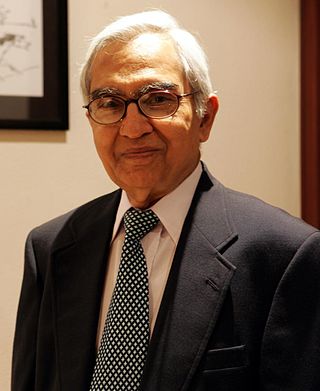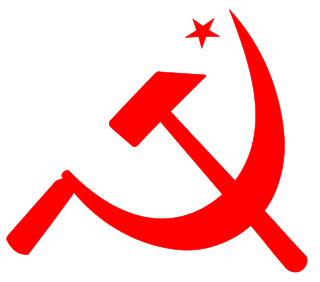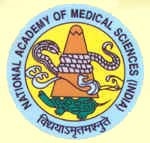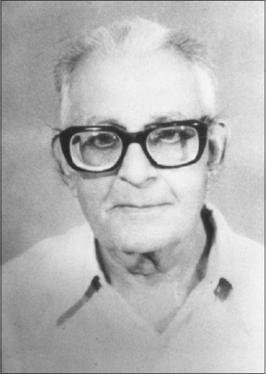
Prakash Narain Tandon is an Indian neuroscientist and neurosurgeon.
Veer Singh Mehta, is a notable Indian neurosurgeon. He received his education and training at SMS Medical College Jaipur and later at AIIMS. Mehta is a pioneer in surgery for brachial plexus injuries in India and is an elected fellow of the National Academy of Medical Sciences.He was elected as the president of the Neurological Society and as the President of the South Asian Neurosurgeons. He is renowned worldwide for his work in the field of Brain Stem Surgery, Brachial Plexus Surgery, Aneurysms and Spinal Tumor Surgery. He is well known Brain Tumor Surgeon in India and has treated numerous Indian and International patient all across the globe for Brain disorders. The Government of India awarded him Padma Shri in 2005. Noted neurosurgeon B. K. Misra was his junior at AIIMS Delhi.
Ramamurthi Balasubramaniam was an Indian neurosurgeon, author, editor, a pioneer in neurosurgery in India and often recognized as the Father of Neurosurgery of India. He set up the Department of Neurosurgery at the Government General Hospital, Chennai in 1950, the Department of Neurosurgery at the Madras Medical College and founded the Institute of Neurology, Madras in the 1970s. He was awarded the Padma Bhushan and the Dhanvantri Award for his contribution to the field of Neurosurgery in India. He is also a recipient of the Lifetime Achievement Award of Madras Neuro Trust.
The Bidhan Chandra Roy Award was instituted in 1962 in memory of Dr. B. C. Roy by the Medical Council of India. It is presented by the President of India in New Delhi every year on July 1, National Doctors' Day. It is also the highest honour that can be achieved by a doctor in India.
Sunkara Balaparameswara Rao was an Indian neurosurgeon. He is regarded as the 'father of neurosurgery in united Andhra Pradesh'. He started the first Department of Neurosurgery in erstwhile Andhra Pradesh in April 1956. He received the Dr. B. C. Roy award in 1989.
R. S. Wadia is a neurologist from India. He is a founding member of the Indian Academy of Neurology.

Dr. Bhim Sen Singhal is the Director of Neurology at Bombay Hospital Institute of Medical Sciences in Mumbai, India.
Noshir Hormusjee "N. H." Wadia was an Indian physician. He was a prominent figure in the field of neurology. Wadia was given the Padma Bhushan award by the Government of India. He was also given the Certificate of Appreciation for Services to Neurology by the World Federation of Neurology in 1993. He pioneered the practice of neurology in India.

Jacob Chandy was an Indian neurosurgeon and teacher of medical sciences. As the first neurosurgeon in India, he is widely regarded as the father of modern neurosurgery in India. In 1964, the Government of India honoured him with their third highest civilian award, Padmabhushan, for his services in the fields of neurosurgery and medical education.

The Politburo or Polit Bureau is the highest body of the Communist Party of India (Marxist). The members of the Politburo are elected by the Central Committee in the immediate aftermath of a National Party Congress, which is held every three years.

Voluntary Health Services, popularly known as the VHS Hospital, is a multispecialty tertiary care referral hospital in the south Indian state of Tamil Nadu, reportedly serving the economically weaker sections of the society. It was founded in 1958 by Krishnaswami Srinivas Sanjivi, an Indian physician, social worker and a winner of Padma Shri and Padma Bhushan awards and is run by a charitable non governmental organization of the same name. The hospital is situated along Rajiv Gandhi Salai at Taramani, in Chennai.
Sheikh Sama is an Indian gastroenterologist, known for his expertise in endocrinology and diabetology. He is considered by many as the Father of Gastroenterology in India. The discovery of Non-cirrhotic portal fibrosis, an idiopathic chronic liver disease is attributed to him, which he described in a 1962 medical paper, co-authored with Ramalingaswami and Wig. The Government of India awarded him the civilian honour of the Padma Shri in 2004 for his pioneering research on liver diseases including Non-cirrhotic portal fibrosis and Hepatitis B. Sama also received the highest Indian medical honour of Dr. B. C. Roy Award in 2004.

National Academy of Medical Sciences (India), better known by its acronym, NAMS, is a non-constitutional, non-statutory advisory body to the Government in matters related to National Health Policy and Planning and as a promoting agency for continuing medical education (CME) for medical and health professionals. It is a part of the Inter Academy Medical Panel (IAMP), a global network of medical academies. The Academy is headquartered at NAMS House, at Ansari Nagar, neighbouring the All India Institute of Medical Sciences and the Indian Council of Medical Research House, along Mahatma Gandhi Marg, in the Indian capital of New Delhi.
Badri Nath Tandon is an Indian gastroenterologist, hepatologist, medical researcher and academic, and the Chairman and Senior Consultant of Gastroenterology, at Metro Hospitals and Heart Institute, Noida. He is a former Professor and Head of Department of Gastroenterology and Human Nutrition Unit at the All India Institute of Medical Sciences, Delhi (AIIMS) and a former Director and Senior Consultant of Hepatology and Gastroenterology at Pushpawati Singhania Research Institute for Liver, Renal and Digestive Diseases, New Delhi. He is a recipient of several awards including Sasakawa WHO Health Prize and Jubilee Medal of the RAMS. The Government of India awarded him the third highest civilian honour of the Padma Bhushan, in 1986, for his contributions to medicine.
Jagjit Singh Chopra was an Indian neurologist, medical writer and an Emeritus Professor of the Department of Neurology at the Post Graduate Institute of Medical Education and Research (PGIMER).
Madakasira Vasantha Padma Srivastava is an Indian neurologist, medical academic and writer, and the professor of neurology at the All India Institute of Medical Sciences, New Delhi. She is known for pioneering Acute Stroke Programme (Code-Red), a medical initiative for supporting patients afflicted with epilepsy and stroke, incorporating Hyperacute Reperfusion strategies including the thrombolysis program. The Government of India awarded her the fourth highest civilian honour of the Padma Shri, in 2016, for her contributions to medical science.

Baldev Singh was an Indian neurologist. He was best known for collaborative works with neurologists Jacob Chandy, Balasubramaniam Ramamurthi and S. T. Narasimhan and together they have been credited to be pioneers in development of epilepsy surgery in India. They also helped in establishing the Neurological Society of India in 1951 at Madras. After training in the United States of America, he returned to India and established himself at Delhi. He was presented with the Padma Bhushan in 1972 for his contributions in the field of medicine.
S. T. Narasimhan was an Indian electrophysiologist. He started the first Electroencephalography (EEG) laboratory in India at Madras in 1950. He was best known for collaborative works with neurologists Jacob Chandy, Balasubramaniam Ramamurthi and Baldev Singh and together they have been credited to be pioneers in development of epilepsy surgery in India. They also helped in establishing the Neurological Society of India in 1951 at Madras.
Sampat Kumar Tandon is an Indian geologist and a professor emeritus of geology at the University of Delhi. He is a former pro-vice chancellor of Delhi University, Sir J. C. Bose Chair Professor of the department of Earth and Environmental Sciences at the Indian Institute of Science Education and Research, Bhopal and a D. N. Wadia Chair Professor of the department of Earth Sciences at the Indian Institute of Technology, Kanpur.
Subramanian Kalyanaraman is an Indian neurosurgeon and a former head of the Department of Neurosurgery at Apollo Hospitals, Chennai. He was known for his pioneering techniques in stereotactic surgery and is an elected fellow of a number of science and medical academies including the National Academy of Medical Sciences and the Indian Academy of Sciences. The Council of Scientific and Industrial Research, the apex agency of the Government of India for scientific research, awarded him the Shanti Swarup Bhatnagar Prize for Science and Technology, one of the highest Indian science awards for his contributions to Medical Sciences in 1969.







